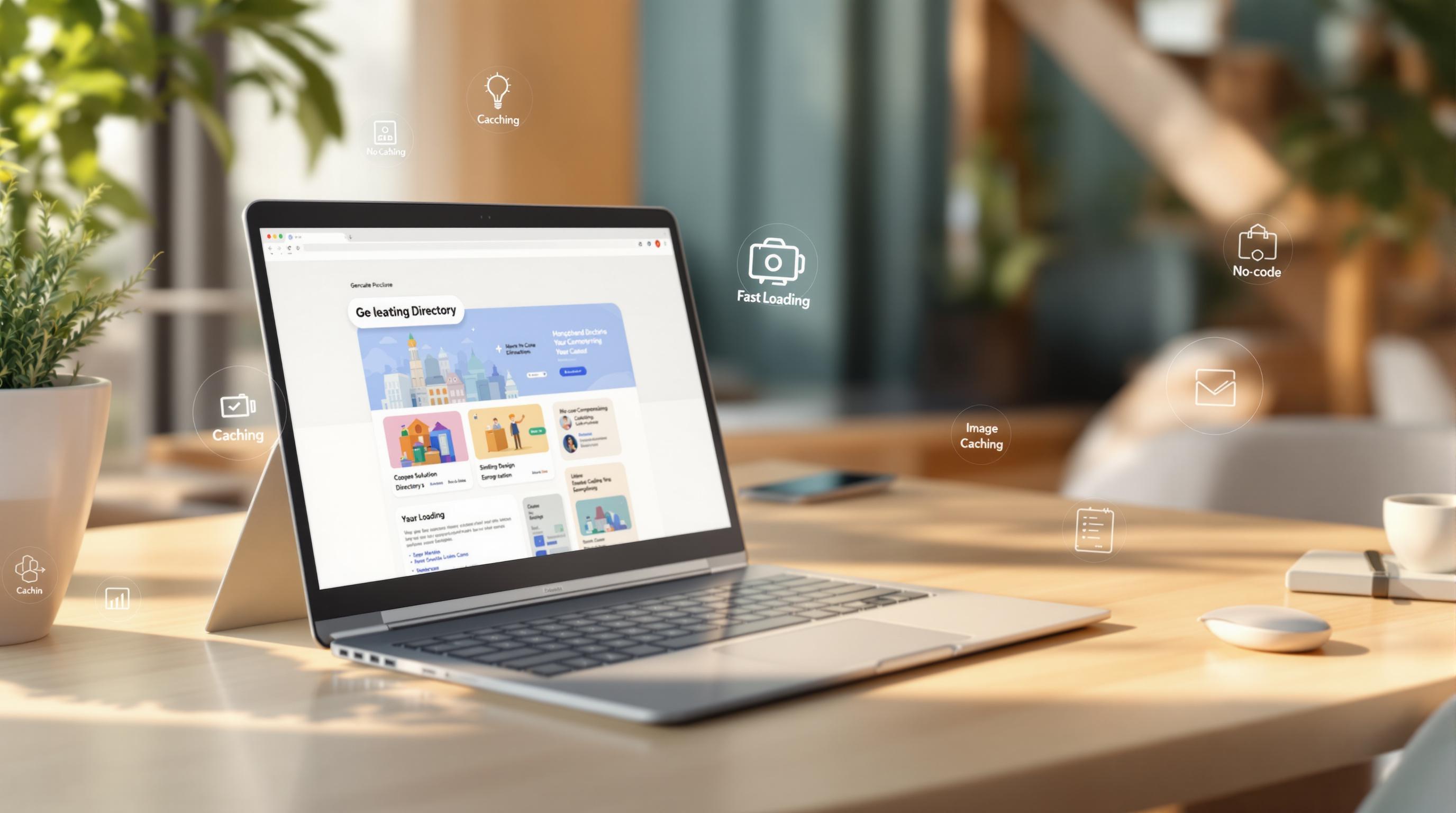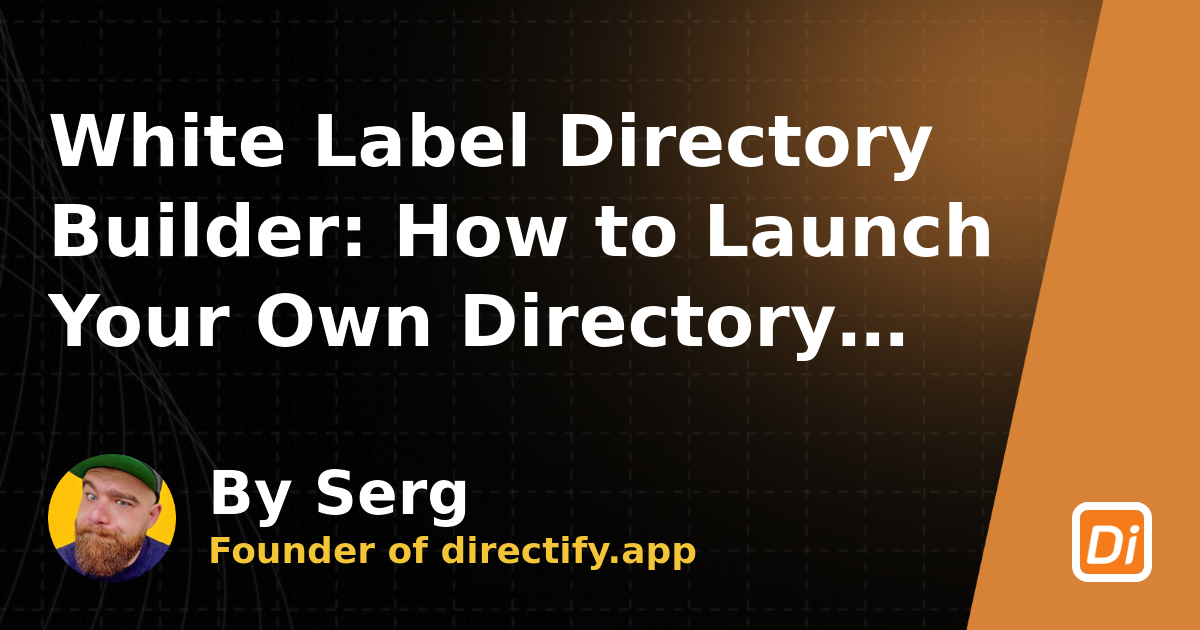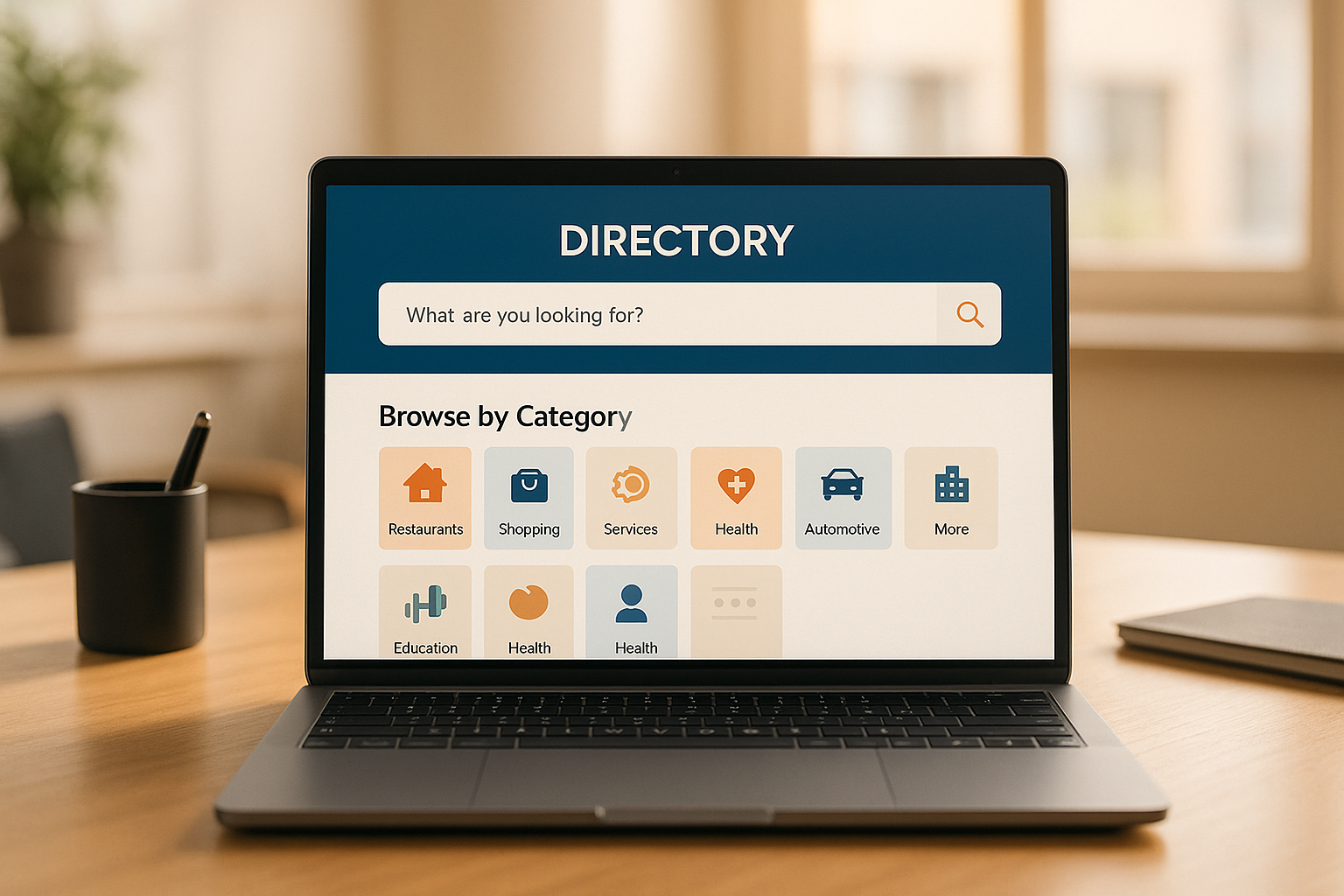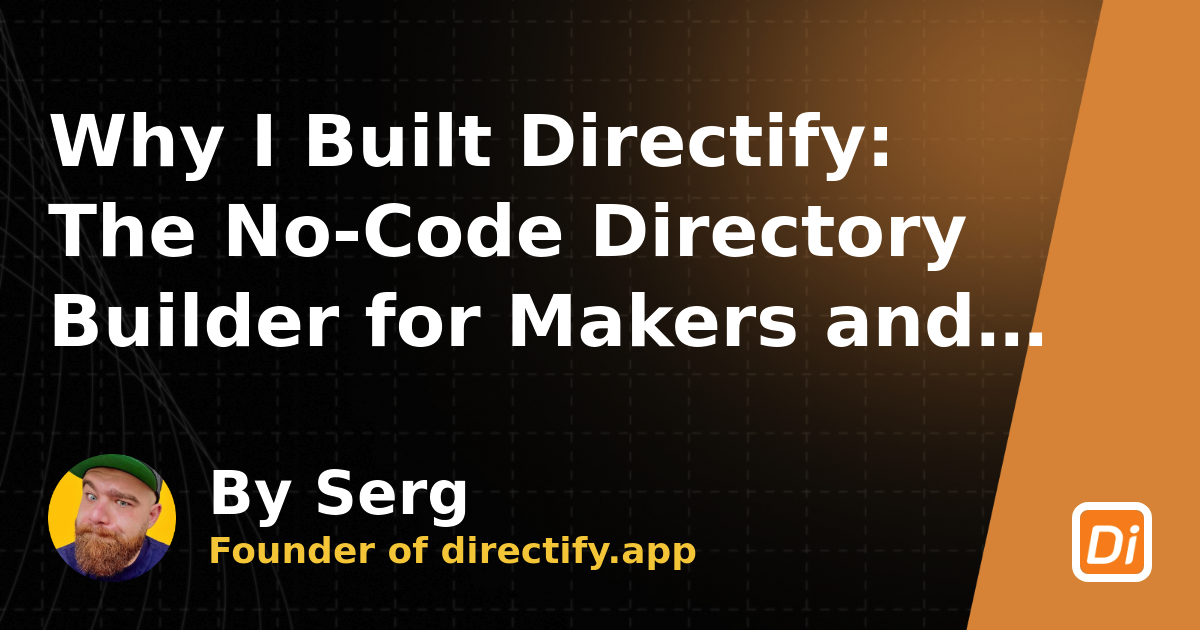
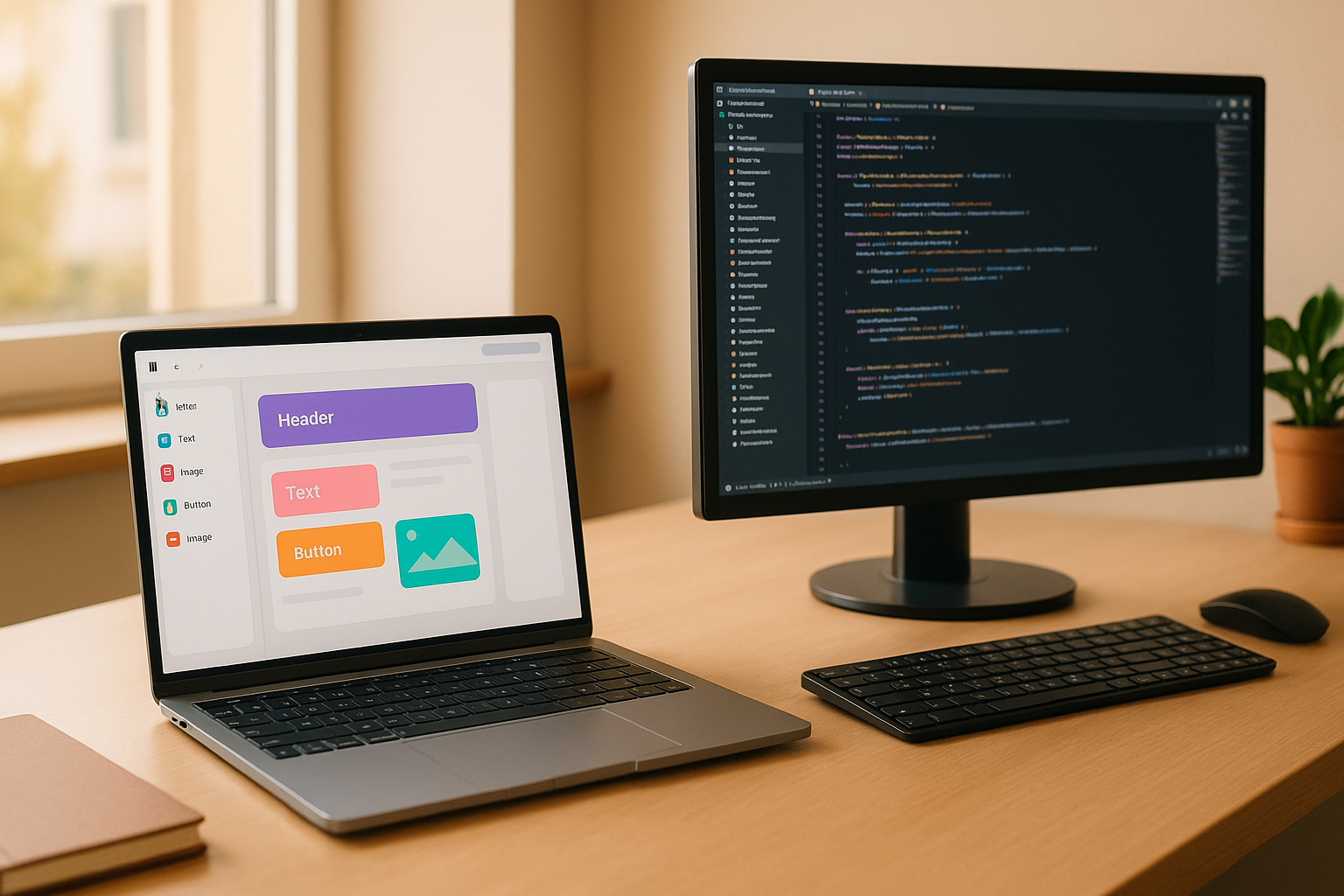
Want to build a website or app but unsure whether to use no-code directory builder or coding? Here's what you need to know:
| Factor | No-Code | Coding |
|---|---|---|
| Time to Launch | Days to weeks | Weeks to months |
| Skills Needed | Minimal | Advanced programming skills |
| Cost | $19–$49/month (e.g., Directify) | Varies by developer |
| Customization | Template-based | Unlimited |
| Maintenance | Platform-managed | Manual updates required |
Choose no-code for speed, simplicity, and affordability. Opt for coding when you need full control and advanced features.
No-code platforms significantly reduce development time, allowing projects to launch in just hours or even minutes instead of the weeks or months traditional coding often requires.
Take, for instance, entrepreneur Alex Johnson, who launched "ToolHub" in September 2023. Using Directify, a no-code platform, Johnson built a complete business software directory in under 2 hours - without any coding knowledge. By comparison, the same project would have taken an estimated 40–60 hours with traditional coding methods [2].
Building with traditional coding demands expertise in programming languages, frameworks, database management, server setups, and version control systems.
No-code platforms like Directify simplify this process by offering user-friendly visual interfaces and pre-built templates. These tools let business owners and entrepreneurs create professional directory websites without the need for extensive technical training. This ease of use not only accelerates project completion but also reduces the need for specialized resources.
The differences in speed and required skills directly affect the costs associated with each approach. The table below highlights how these factors influence key expenses:
| Cost Factor | Traditional Coding | Directify No-Code Platform |
|---|---|---|
| Setup | High costs for custom development | $19–$49/month subscription |
| Development Team | Requires hiring skilled developers | No developer hiring needed |
| Infrastructure | Additional costs for hosting and services | Included in the subscription |
| Maintenance | Ongoing expenses for updates and fixes | Covered in the subscription |
| Time to Market Cost | Higher due to lengthy development cycle | Lower due to rapid deployment |
No-code platforms like Directify offer a clear financial advantage. By eliminating the need for expensive developers and separate infrastructure management, they provide a cost-effective, subscription-based solution. This pricing model includes hosting, maintenance, and updates, making it especially appealing for small businesses and entrepreneurs who need to control costs while launching quickly.
No-code platforms have reshaped website design by using visual editors and pre-built components. These tools let users make design updates quickly - no coding required.
Take Directify as an example. Its built-in theme system allows directory owners to easily tweak their website's look through an intuitive interface. Users can change colors, layouts, and other styling features while keeping a polished, professional appearance. This approach is ideal for businesses needing fast design updates.
For instance, in 2024, ToolHub used Directify's theme editor to give their site a full visual makeover. This highlights how simple yet flexible these tools can be. Here's a quick look at the customization options:
| Design Element | Customization Options |
|---|---|
| Theme System | Pre-built templates to choose from |
| Visual Editor | Adjust colors, typography, and spacing |
| Layout Control | Modify custom fields and listing layouts |
| Mobile Design | Responsive settings and breakpoints |
| Brand Elements | Add logos and custom CSS |
On the other hand, developers who prefer traditional coding enjoy complete freedom to create designs tailored to highly specific or complex requirements.
Traditional coding gives developers full control by working directly with HTML, CSS, and JavaScript. This method supports complex integrations with external tools, deep performance optimizations, and highly specialized functionality designed for unique business needs.
While coding offers unmatched flexibility, platforms like Directify now bridge the gap by including advanced features. These include custom HTML/CSS/JS injection, webhooks for connecting third-party tools, and robust API access access. This hybrid model combines the speed and simplicity of no-code with the ability to make detailed, custom tweaks when necessary.
No-code platforms are ideal when you need speed, simplicity, and affordability. They work especially well for businesses that want to launch quickly without relying on technical teams.
A standout example is directory websites. No-code tools shine in these scenarios:
Take Online Schools UK as an example. They built an educational directory using a no-code platform and achieved impressive results:
However, if your project requires extensive customization or complex integrations, no-code might not be the best fit.
Custom coding is the way to go for projects that demand advanced customization or intricate integrations. It provides unmatched flexibility, making it suitable for:
While custom coding offers precise solutions tailored to your project, it typically requires more time and resources to execute. It’s the better choice when your needs go beyond the capabilities of no-code tools.
Deciding between no-code platforms and traditional coding depends on your project's needs, timeline, and available resources. No-code tools are perfect for quick deployment and ease of use, making them ideal for fast market entry. For directory websites, platforms like Directify simplify hosting and deployment, allowing you to focus on scaling your business.
Here’s a comparison to help guide your decision:
| Factor | No-Code | Traditional Coding |
|---|---|---|
| Time to Launch | Days to weeks | Weeks to months |
| Technical Requirements | Basic knowledge | Advanced programming |
| Cost | $15–$49/month [1] | Varies by developer |
| Customization | Template-based | Unlimited |
| Maintenance | Platform-managed | Ongoing development |
No-code solutions are a great fit when:
On the other hand, custom coding is better suited for:
Each approach has its strengths. No-code platforms offer speed and simplicity, while custom coding provides greater flexibility and control, albeit with longer development timelines. Match your choice to your business goals and resources for the best results.
No-code platforms offer small businesses a faster, more cost-effective way to build and manage websites without the need for technical expertise. Unlike traditional coding, no-code tools streamline the process with intuitive interfaces and ready-made templates, making it easy to create professional results without hiring developers.
For example, no-code platforms handle complex tasks like hosting, deployment, and design, so businesses can focus on their goals rather than technical challenges. This approach significantly reduces development time and costs, allowing small businesses to quickly launch and monetization features their projects with minimal effort.
No-code platforms like Directify simplify updates and maintenance by handling tasks such as hosting, deployment, and system upgrades for you. This means you can focus on building and managing your directory without worrying about server management or technical upkeep.
With features like SEO optimization, custom domains, and customizable themes, Directify streamlines the process of creating and maintaining a directory website. You don’t need technical expertise to keep your site running smoothly, as the platform takes care of the heavy lifting behind the scenes.
Yes, no-code platforms like Directify are built to handle scalability and support future growth. They offer features such as unlimited listings, custom domains, and the ability to create custom pages, making them suitable for both small projects and larger, more complex needs.
With tools designed for flexibility and expansion, no-code platforms empower users to adapt and grow without requiring technical expertise, ensuring long-term usability and success.
Start creating your professional directory website today with Directify's no-code platform.
Get Started Free

